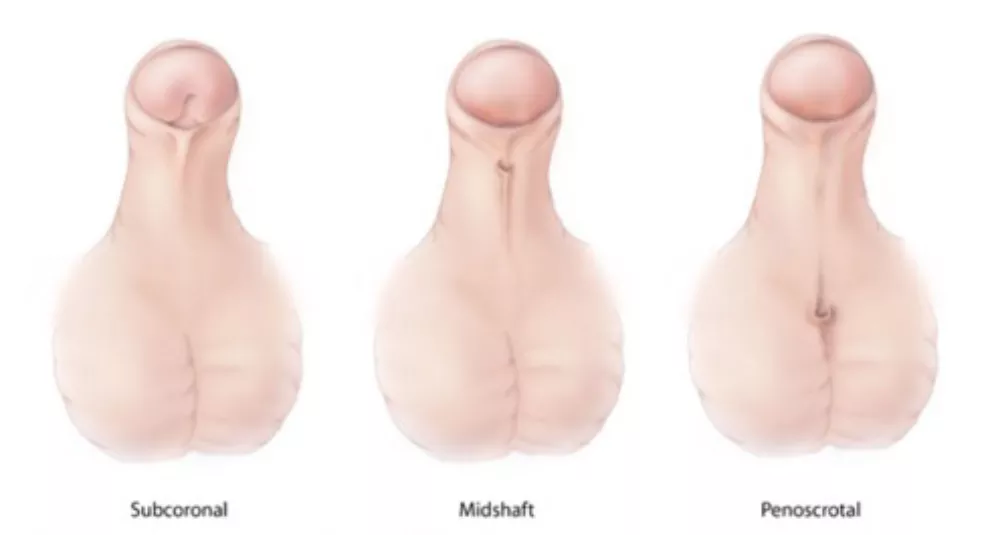Hypospadias
What is hypospadias?
Hypospadias a common condition. It affects about 1 out of every 300 boys. Hypospadias is usually noticed at birth, but it can also be recognized at an older age.
The hole where urine comes out of the penis is called the urethral meatus. In hypospadias, that hole is on the underside of the penis instead of on the tip of the penis. Sometimes the penis will also curve downward. That is called chordee. In most cases of hypospadias, the foreskin also appears to be abnormal.

What causes hypospadias?
The cause of hypospadias is not known for sure. What is known is that the abnormality of the penis begins during pregnancy. There is an increased risk of hypospadias in a child if a family member has hypospadias or if in vitro fertilization is used for conception. But most boys with hypospadias do not have those risk factors.
What are the symptoms of hypospadias and how is it diagnosed?
Early in life, boys usually do not have any symptoms from hypospadias. They can still urinate normally without any pain.
Hypospadias is considered more severe when the urinary opening is closer to the testicles than to the tip of the penis. Children with severe hypospadias are more likely to notice symptoms. This happens as the child gets a little older.
Hypospadias and chordee can cause the urinary stream to be directed downward and make it difficult to stand to urinate. Severe chordee can also cause problems with sexual function.
A doctor diagnoses hypospadias by doing a physical examination of the child.
Does treatment for hypospadias require surgery?
Sometimes no treatment is needed for mild hypospadias.
Hypospadias repair is a surgery that can be performed if there is concern that hypospadias will affect urination, sexual function, or if there is concern about the appearance of the penis.
During hypospadias repair, the hole can be moved to the tip of the penis. The curve can usually also be corrected during the same procedure.
It is important in some cases of hypospadias to delay circumcision so that the extra tissue can be used to reconstruct the penis during hypospadias repair. In severe cases, multiple surgeries may be required to correct hypospadias. Hypospadias surgery usually requires general anesthesia, which means the child will be asleep during the procedure.
As with any surgery, there are possible risks. The most common risks of hypospadias repair include scar tissue forming. Scar tissue can cause difficulty with urination. Another risk is that s second hole may form. This is called a fistula.
Hypospadias surgery is complex, and the risk of these types of complications increases with more severe hypospadias.
What happens after hypospadias surgery?
Most patients do not have to stay overnight in the hospital after hypospadias surgery. After most hypospadias repairs, a catheter will be in the child’s urethra to drain urine from the bladder while the child is recovering.
It is common for the penis to appear red, bruised, and swollen for weeks after hypospadias surgery. Most children will have some pain after surgery, but every child is different.
Your doctor will discuss with you the options for controlling the pain and making your child as comfortable as possible after surgery.
Children who have hypospadias surgery normally return for follow-up doctor visits in the weeks and months after the surgery, and as the child grows, to make sure urination is normal and erections are straight.